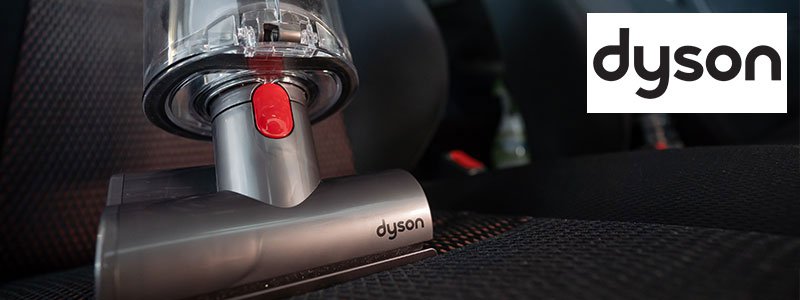The perils of growth at all costs
Archived article
Archived article: please remember tax and investment rules and circumstances can change over time. This article reflects our views at the time of publication.
It’s amazing how often you see this pair of graphs in a company presentation.

The larger the addressable market, and the faster it’s growing, the better.
It’s the conventional wisdom – and I understand that. CEOs are incentivised to grow their businesses. If they succeed, even temporarily, they are often rewarded with a higher share price.
But there is a dark side to the pursuit of growth. Companies forget this, especially towards the end of bull markets.
Important: This article outlines Charlie’s personal investment views. It is not a personal recommendation to buy, sell or hold any of the investments mentioned. Experienced investors should form their own considered view or seek advice if unsure. This article is original Wealth Club content.
Growth creates complexity and distraction
It’s very easy to plot growth in a chart. It’s far more difficult to pull it off in practice.
Just look at the issues online fashion retailer ASOS has faced. Over the last five years, the company has grown customer numbers by 70% and doubled its revenue. However, the share price chart paints a different picture.
ASOS total return (%)
The problem for ASOS hasn’t been a lack of growth opportunities, in my view – but the pursuit of too much growth. In particular, a foray into overseas markets placed enormous strain on the company’s infrastructure and dramatically increased the complexity of its operations. This has seen profits fall by 70% over the last five years.
ASOS probably would have been better off focusing on its home market, rather than chasing overseas growth. But the allure of expanding its “total addressable market” proved too tempting.
It’s a trap many companies fall into, especially in good economic times. They factor in the direct costs of expansion, but forget about the indirect ones – like increased complexity and distraction. Together, these can easily outweigh the potential rewards.
Profit and cash get forgotten
The pursuit of too much growth often leads to questionable priorities. Revenue, customer numbers, and even web traffic, can be given more importance than profit and cash.
We’ve seen this in spades over the last decade, especially in the technology sector. But the times, they are a-changin’. The funding taps are being tightened and profit margins and cash suddenly matter more again.
Unfortunately, for some businesses, this shift in priorities comes too little, too late.
Made.com, the online furniture retailer, is a case in point. In March of this year, the company reported a 50% increase in revenue, to £372m, and its CEO made the following statement:
"MADE has an unrivalled understanding of its digital native customer base and this has enabled us to upgrade our proposition and significantly increase market share. We have a clear strategy, talented team and multiple levers to drive growth in the years ahead.”
 Eight months later, the company called in the administrators.
Eight months later, the company called in the administrators.
The problem? The group ran out of cash after loading up on inventory earlier in the year in the hopes demand for sofas would remain strong. Once the economy weakened and the pandemic-induced boom in online sales started to unwind, there was nowhere to hide.
Again, a lack of growth opportunities wasn’t the issue. I believe it was the “growth at all costs” mindset, and a business model that struggled to generate cold hard cash.
Ostracised customers
There are trade-offs to taking on new customers. One is that existing customers can easily become neglected.
New customers may need more staff to service them. So, if customer numbers grow too quickly, it’s easy for service levels to slip. New customers are also often expensive to acquire, diverting funds that could be used to improve the customer experience.
Despite this, many businesses are more concerned with adding new customers, than looking after existing ones. Some of the big banks are a good example. They will happily spend on fancy marketing campaigns, but if you try calling them, the experience often leaves a lot to be desired. And if you want to visit your local branch, forget it.
The best way to build a durable business is to delight your existing customers. If you do that, they’ll keep coming back and tell their friends. Any good trades person understands this. Do a good job cutting Mrs Miggins’ hedge, and before long you’ll be doing the neighbours’ gardens.
It means most companies should probably spend 90% of their time and resources on existing customers, and 10% on recruiting new ones. Yet, often, the opposite seems to be the case.
Fast-growing markets are a magnet for competition
The larger and faster growing a market, the more likely it is to attract copycats.
Online food delivery is a great example. This sector has seen massive growth in recent years, accelerated by the pandemic. And yet, look at the share price performance of the UK’s leading food delivery marketplace – Just Eat – since the pandemic started.
Just Eat Takeaway total return (%)
Just Eat originally had a highly attractive business model. Its online platform connected hungry customers with takeaway operators, leaving the costly donkey work of delivering food to the restaurants. Just Eat simply took a commission on each sale, meaning the business produced lots of cash.
Then things changed.
The market was too attractive for Just Eat to have to itself. Deliveroo came on the scene, and Uber quickly followed. These businesses differed from Just Eat in one crucial way – they delivered food on behalf of restaurants. The economics of this business model frankly suck. Still, Just Eat had little choice but to follow suit. Profits and cash flow plummeted.
You’d think a fast-growing market would give a business more options. Often, the opposite is the case. Competition enters and incumbents are forced to respond in ways they wouldn’t necessarily choose.
This is what I think happened to Just Eat. It lost control of its own destiny, not because the market wasn’t growing – but because it was growing too much.
The dangers of bureaucracy
How did one man and his dog, operating from a rural coach house, revolutionise the multi-billion dollar vacuum cleaner industry, dominated by large incumbents?
Well, for all his lack of resources, James Dyson possessed one thing the likes of Electrolux and Hoover didn’t – the willingness to innovate. 5,126 failed prototypes later and Dyson’s bagless vacuum cleaner was born.
 The rest of the industry was caught sleeping. They were more interested in defending the highly profitable bag replacement business than exploring the merits of constant suction.
The rest of the industry was caught sleeping. They were more interested in defending the highly profitable bag replacement business than exploring the merits of constant suction.
I see it all the time. As companies grow bigger, they stop doing what made them successful in the first place, like innovating and taking risks. This sows the seeds of decline.
Beware of transformational acquisitions
If you really want to cause problems for your business, how about making a large, transformational acquisition?
That way you can have the problems growth presents all at once. Better still, why not acquire right at the top of the cycle, and saddle yourself with debt?
Many businesses fall into this trap. They make big acquisitions at precisely the wrong time, causing themselves serious indigestion.
Rio Tinto’s $38 billion purchase of Alcan, the Canadian aluminium producer, is a prime example.
Rio acquired Alcan via a bidding war right before the 2008/09 financial crash, burdening itself with debt, at a time when cash was like gold dust. To compound matters, China then entered the aluminium industry, flooding the market with cheap metal. Aluminium prices didn’t recover until 2021, and within six years more than half the value of the deal had been destroyed.
Rio Tinto is far from alone.
Companies often view acquisitions as a quick route to growing revenues and profits. But growth only creates shareholder value if it produces a healthy return on the money invested. This is where many acquisitions fall down. Add the inherent risks of deal-making, and it’s not surprising that many big acquisitions end up being transformational for all the wrong reasons.
So, what’s the solution – avoid growing businesses?
Not at all.
I’ve highlighted some often overlooked issues growth causes. But, if managed sensibly, growth can be a great thing.
Indeed, I want to own growing businesses. But I’m looking for those that:
- Have a deep competitive moat – allowing them to exploit industry growth dynamics, without others eating their lunch.
- Dominate a niche – large, exciting markets attract competitors more easily than small, unglamorous ones, yet the latter can offer excellent growth prospects.
- Grow steadily – steady growth is easier to manage and sustain than rapid expansion, avoiding a lot of the problems I’ve discussed.
- Favour bolt-on acquisitions over transformational ones – smaller deals are usually cheaper, less risky and easier to integrate: a win-win.
- Prioritise profit and, above all cash, over revenue.
- Seek to limit bureaucracy as much as possible – for example, by splitting themselves into small, autonomous units as they grow.
It’s my way of trying to get the benefits of growth, without all of the problems.
It does mean I’m likely to miss out on companies growing rapidly. But hopefully, it also increases my chances of owning durable companies that can sustain growth for decades.
See five-year performance of the shares mentioned above
Apply online now: Quality Shares Portfolio, managed by Charlie Huggins
The Quality Shares Portfolio, managed by Charlie Huggins and exclusively available through Wealth Club, is a portfolio specifically designed for people who are genuinely interested in investing.
It’s a portfolio of 15-20 global businesses chosen for their resilience, financial strength and pricing power.
It is profoundly different from any other investment you might hold in two key respects. The first is the level of information, insight and transparency it provides (you can see an example here). The second is in the investing approach itself.
You can invest in the Quality Shares Portfolio online, if you’re a high net worth or sophisticated investor. The minimum investment is £10,000; you can invest in an ISA, SIPP or in a General Investment Account, subscribing new money or transferring existing investments.
Liked this article? Register to receive the next one straight into your inbox.
See five-year performance of HL Select UK Growth Shares (Acc)
Wealth Club aims to make it easier for experienced investors to find information on – and apply for – investments. You should base your investment decision on the offer documents and ensure you have read and fully understand them before investing. The information on this webpage is a marketing communication. It is not advice or a personal or research recommendation to buy any of the investments mentioned, nor does it include any opinion as to the present or future value or price of these investments. It does not satisfy legal requirements promoting investment research independence and is thus not subject to prohibitions on dealing ahead of its dissemination.
